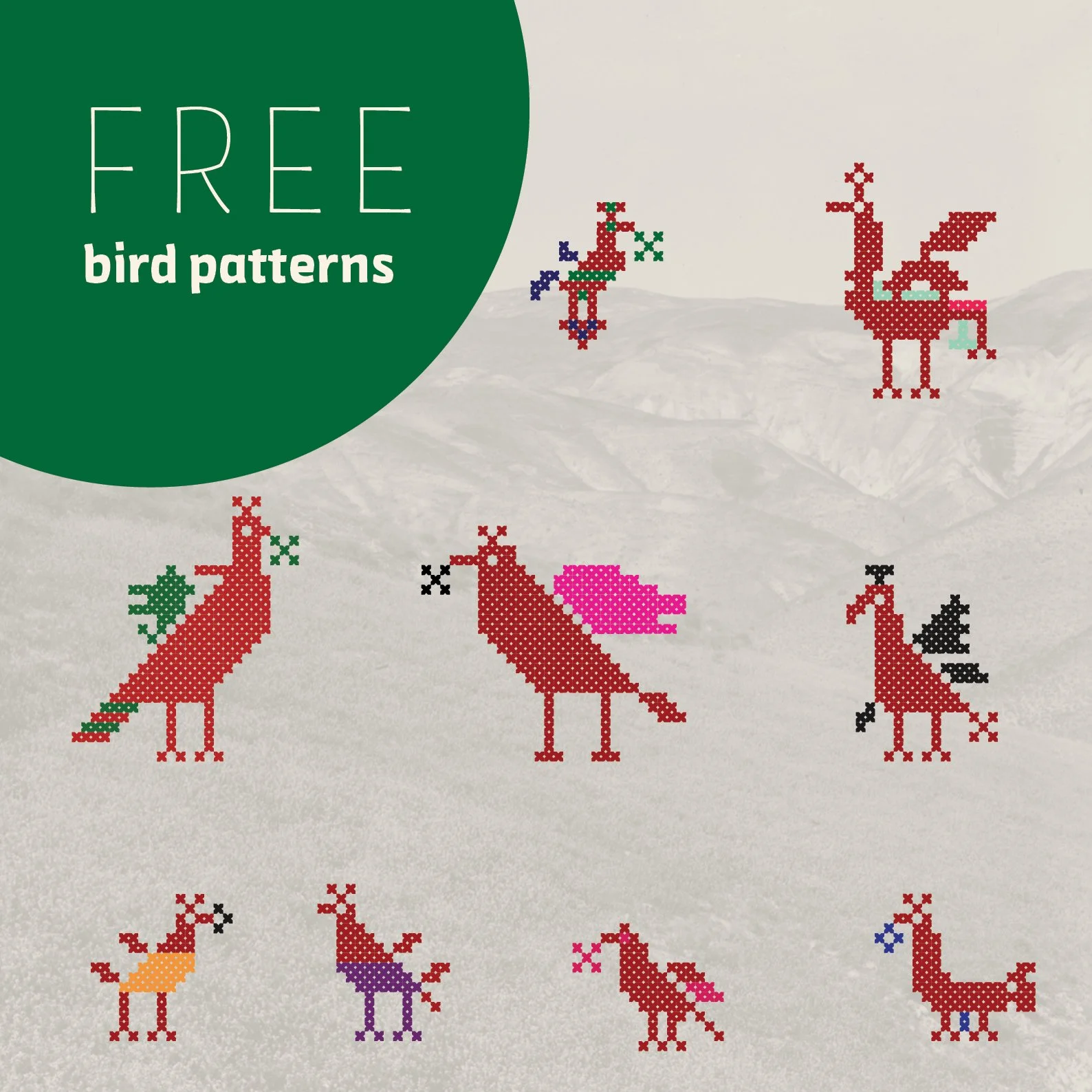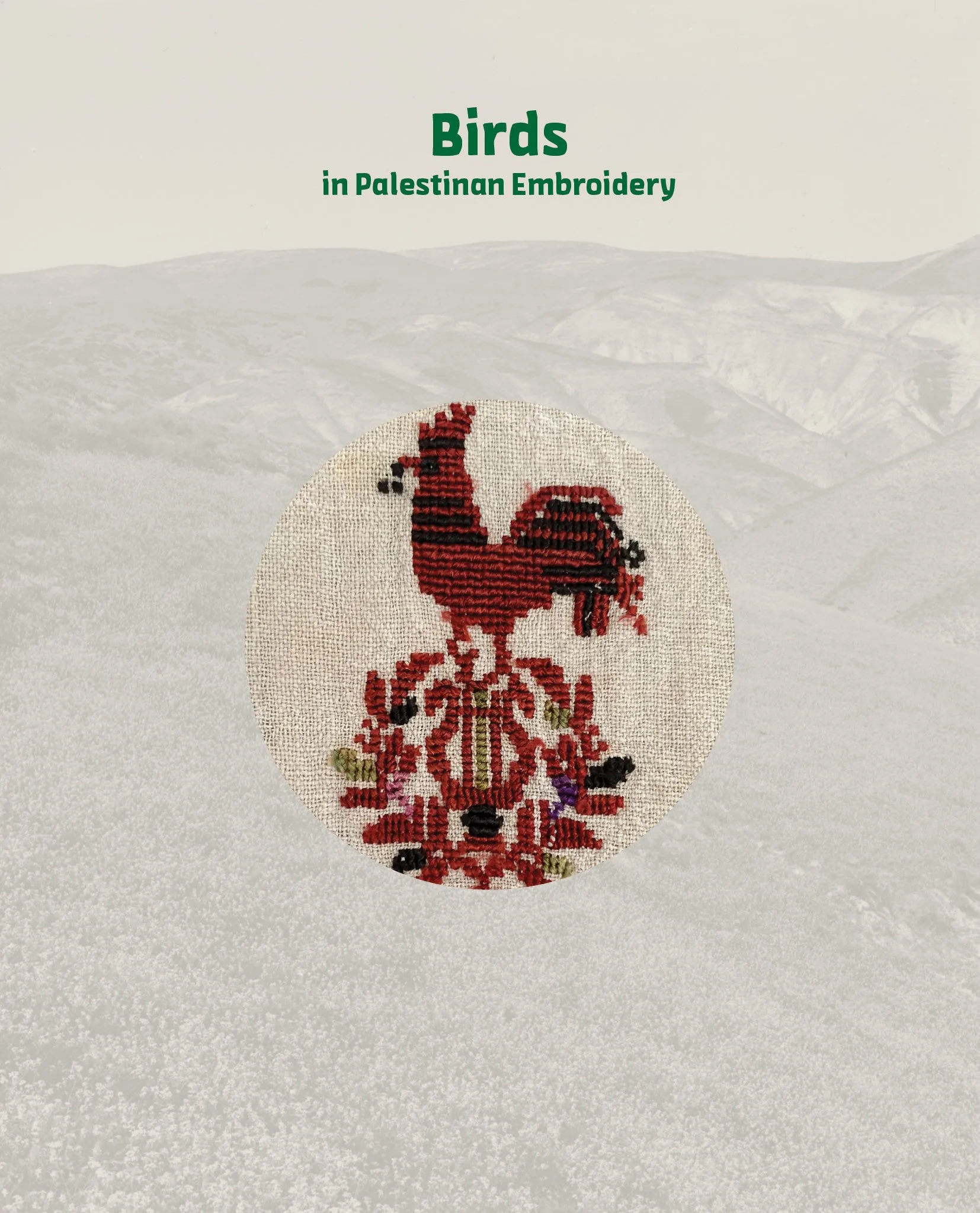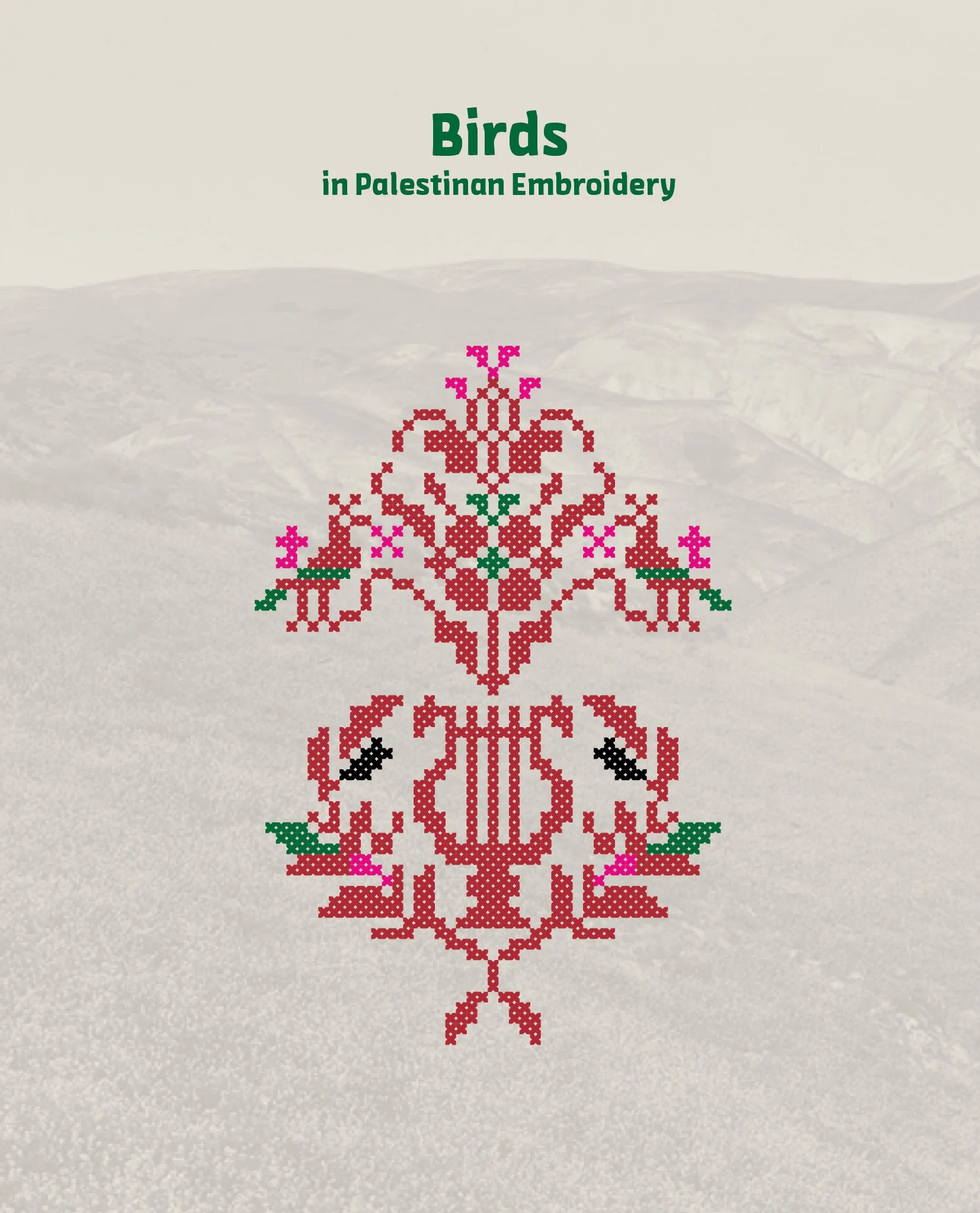



Birds in Palestinian Embroidery – A Downloadable Tatreez Pattern
In this downloadable 10-page pattern booklet, we’ve gathered a variety of bird designs from traditional Palestinian thobes—dresses from different regions—and carefully redrawn them into clear, accessible tatreez (embroidery) patterns. Some appear in clustered arrangements with floral pots, feathered moons, and harps, while others are presented individually for ease of use. Most of the designs are sourced from dresses in the Widad Kawar Collection.
Birds became very popular in Palestinian tatreez mainly in the early 20th century. They were especially favored in Ramallah during the 1920s, often stitched on chest panels, sleeves, and head shawls.
The Palestinian village woman had her own way of interpreting these motifs into her dress, and the exact way she used them became very interesting and unique. When bird designs were embedded within floral compositions on the sleeve of her dress, for instance, she would take that exact bird and place it standing alone on her chest panel. She also often placed a bird alongside elements such as flower pots, or bigger birds like roosters standing on harps or feathered moons. Sometimes, and with time, these birds began to look very geometrical to match the rest of the dress. Birds appeared extensively in the Ramla area and in Jerusalem, where they were used in both couching and cross-stitch techniques. In Bethlehem, they appeared in couching—sometimes above the chest panels and on the taqseere jackets.
Over time, bird motifs spread to the villages around Jerusalem, Ramla, Jaffa and Bethlehem—appearing in both couching and cross-stitch techniques. From the 1940s onward, they featured more frequently in long decorative bands (eruq), becoming widespread after the 1950s.
The patterns come as a 10-page PDF download in A4 size.
In this downloadable 10-page pattern booklet, we’ve gathered a variety of bird designs from traditional Palestinian thobes—dresses from different regions—and carefully redrawn them into clear, accessible tatreez (embroidery) patterns. Some appear in clustered arrangements with floral pots, feathered moons, and harps, while others are presented individually for ease of use. Most of the designs are sourced from dresses in the Widad Kawar Collection.
Birds became very popular in Palestinian tatreez mainly in the early 20th century. They were especially favored in Ramallah during the 1920s, often stitched on chest panels, sleeves, and head shawls.
The Palestinian village woman had her own way of interpreting these motifs into her dress, and the exact way she used them became very interesting and unique. When bird designs were embedded within floral compositions on the sleeve of her dress, for instance, she would take that exact bird and place it standing alone on her chest panel. She also often placed a bird alongside elements such as flower pots, or bigger birds like roosters standing on harps or feathered moons. Sometimes, and with time, these birds began to look very geometrical to match the rest of the dress. Birds appeared extensively in the Ramla area and in Jerusalem, where they were used in both couching and cross-stitch techniques. In Bethlehem, they appeared in couching—sometimes above the chest panels and on the taqseere jackets.
Over time, bird motifs spread to the villages around Jerusalem, Ramla, Jaffa and Bethlehem—appearing in both couching and cross-stitch techniques. From the 1940s onward, they featured more frequently in long decorative bands (eruq), becoming widespread after the 1950s.
The patterns come as a 10-page PDF download in A4 size.
